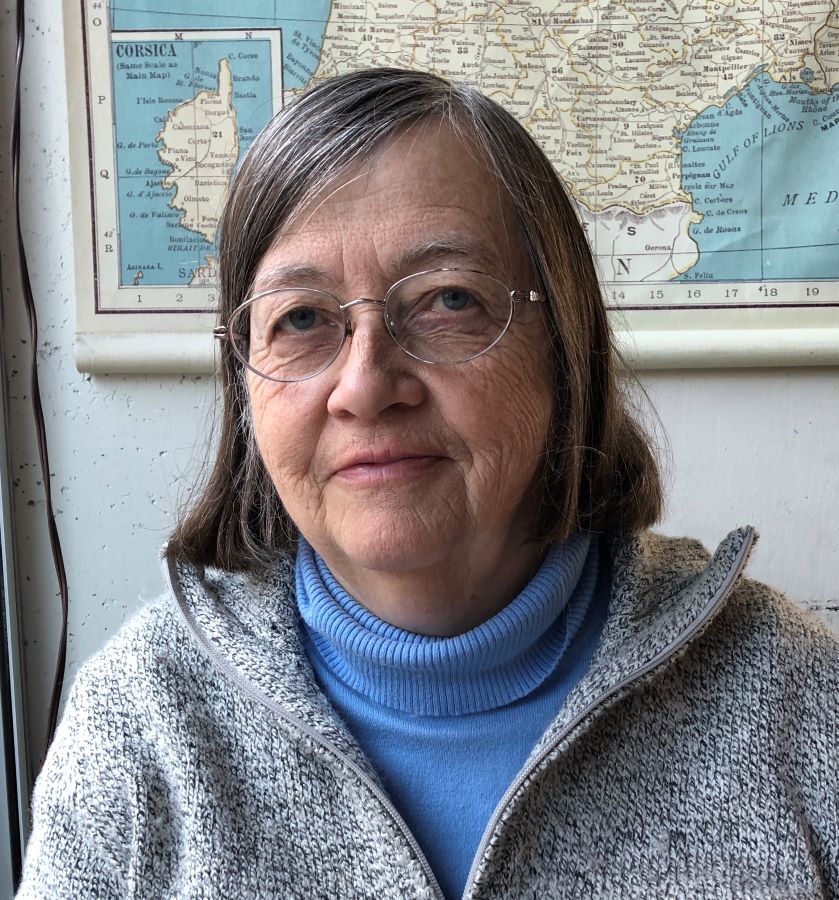
Heather MacKean is our Woman of the Week, nominated for her work as church iconographer. She takes in students to teach iconography, fills in as choir director wherever she is working, and attends all that parish’s services. You see her here on the scaffolding working on the iconography program at St. Nicholas Church in Portland, Oregon, and later with the finished icons of the saints of North America at the same church. We asked her to tell you how she became an iconographer:
“I was a visual fine arts major at York University In Toronto, Ontario. But this was the 1970s, when they had stopped teaching anything about technique. Out of frustration, I decided to switch to philosophy and literature but the university informed me that I couldn't change majors midstream. So I dropped out. Someone who had been one of my professors, who was also an art critic for The Globe and Mail who had written about some group art events I had been a part of, John Bentley Mays, contacted me out of the blue on the feast day of St. John Chrysostom. He said, “I am celebrating St. John Chrysostom’s feast day. Would you like to come?” He was an Anglican. I had no idea he was even a Christian when he was my professor at York but that brought me back into the church after an absence of several years. He also introduced me to iconography. He was very interested in Orthodoxy although he never converted. He gave me an article “Tradition and Traditions” by Leonid Ouspensky and Vladimir Lossky and showed me icons. The first icon I ever painted–I was still an Anglican–was for him. It was an icon of Our Lady of the Sign and his wife said he used it in his prayer corner for the rest of his life.
“I used the money that I saved from not going to the university to travel and visit different contemplative communities. I was thinking about joining L’Arche in France, but there was an icon of Christ over the table where I was filling out immigration forms. Every time I looked at this icon, I heard this voice in my head saying, “You don’t belong here”. So I went back to Canada even though I felt like I was throwing myself over a cliff.
“I returned to my Anglican parish the first Sunday that I was back in Canada but in the middle of the service, I heard that same voice again saying, “You don’t belong here”. John had introduced me to the Orthodox church earlier so I decided to try that, and I ended up going to the Antiochian church because they used more English. Three months later, I was chrismated by Fr. Theodore Kouffos. He was an accomplished iconographer himself but he didn't think women could be icon painters. And I thought,’ If a woman could give Christ his human image in her womb, why can't she paint his human image on a board?'
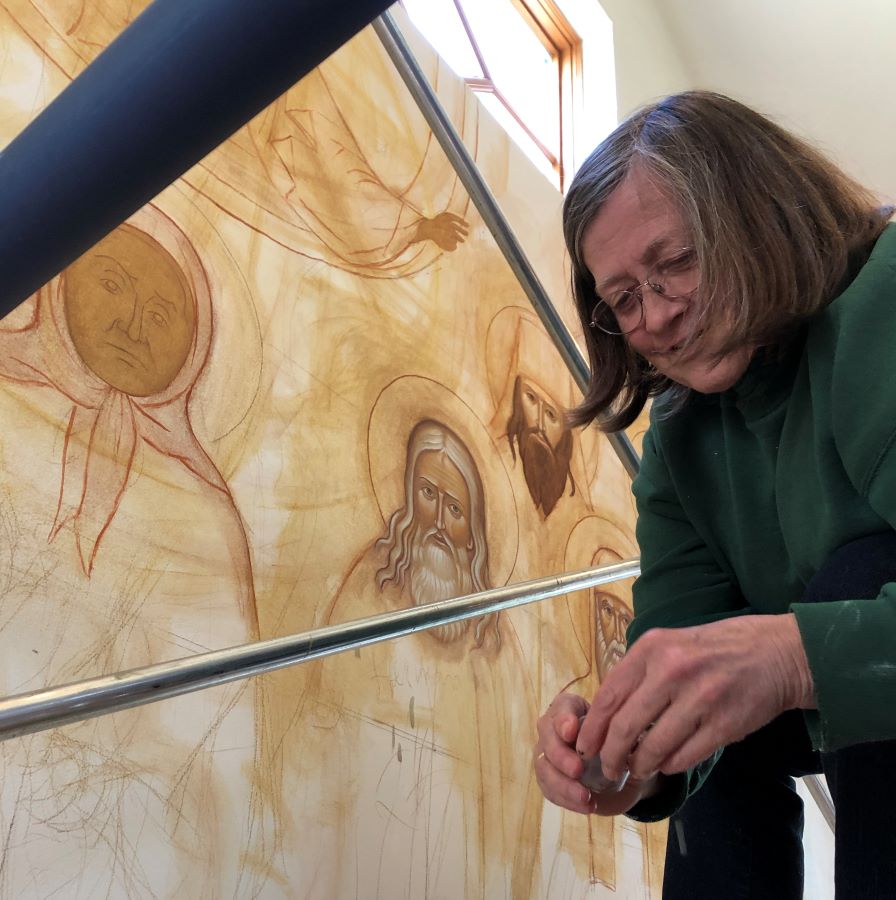
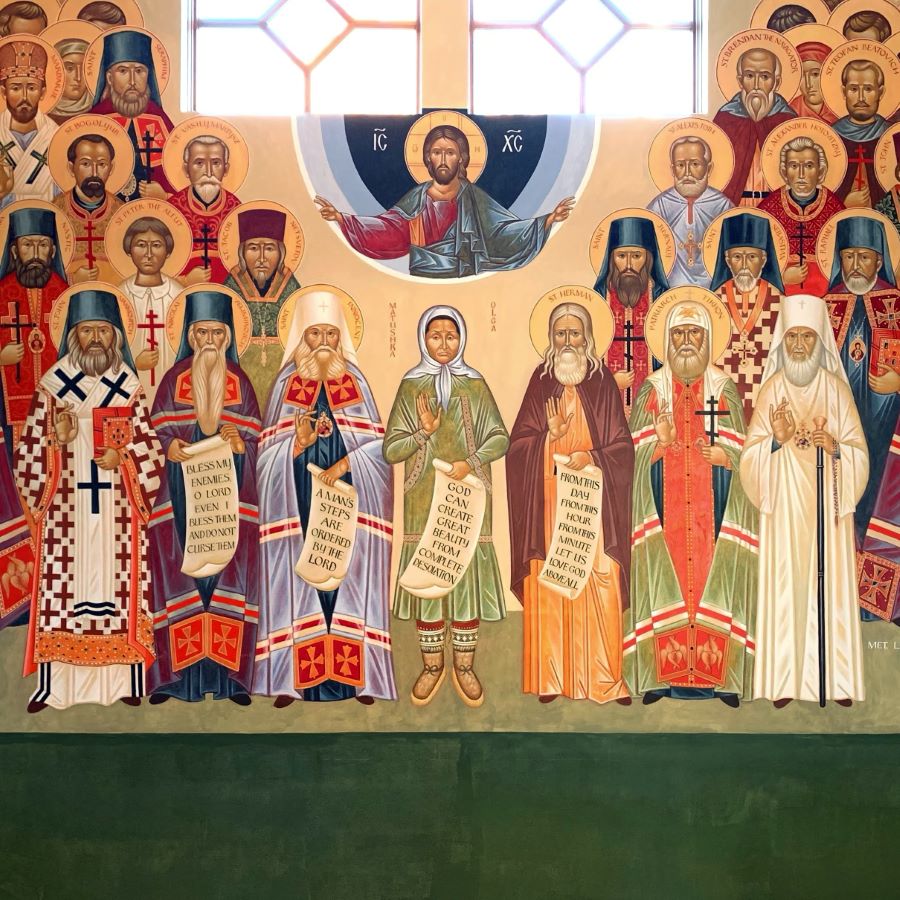
“During my first Lent in the Church, I started going to the Russian Orthodox OCA parish where Fr. Nicholas Boldireff was serving because they had more services. Fr. Nicholas had ordered icons for the church but Fr. Kouffos didn’t have space to paint them. So Fr. Nicholas set up a place in the basement of the church at Christ the Savior Cathedral to paint these icons for their iconostasis. I lived just around the corner, so every time he would show up to paint, Fr. Nicholas would call me and say, “He's here”. Fr. Nicholas would accompany me downstairs so that the iconographer wouldn’t throw me out. And he begrudgingly let me watch what he was doing.
“Later on, I tried to be a nun in Canada. That didn't work out. When I returned from that community, Fr. Thomas Hopko contacted me and said, “Helena Nikkanen is going to teach a class in egg tempera iconography at St. Vladimir’s Seminary. You need to come.” He arranged a place for me to stay near the seminary. I did that for a semester and stayed for the year taking other classes. The seminary was very gracious to me because whenever Fr. Nicolas Ozolin would come to teach iconology, the seminary always let me take his classes as a special student. That was my introduction. I also studied for eight weeks with the iconographer Fr. Tregubov up in New Hampshire. He and his family were so wonderful. Then the rest of the time I looked at endless icon books to learn the language and try to do things properly. I'm almost 70 now and only now feel that I finally know what I'm doing, even though I never stop learning.”
Axia!
Our Woman of the Week is church iconographer Heather MacKean. You see her here with the dome that she recently finished for the church of the Annunciation in Santa Maria, California, along with an icon of St. Mary of Egypt on a pillar in that same church, and Matushka Olga. We asked her what she’d like you to know about painting icons, even if you’re not working at the same large scale she is:
“I have a lot of different students that come to study with me, but I find that American students are often difficult because they like to do their own thing. They don't really value apprenticeship or working with somebody over a long period of time. They tend to be more product-oriented. In traditional icon schools all you do for the first two or three years is draw. Then you get into the painting part of icons. The foundation of good iconography is good drawing.
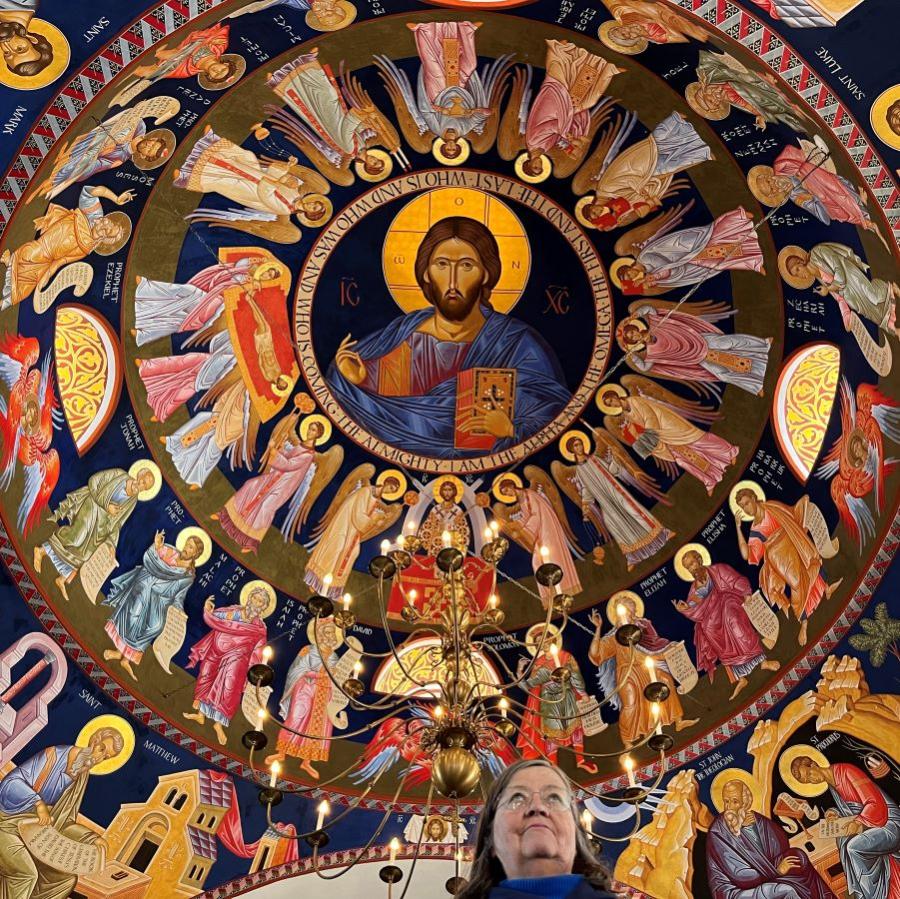
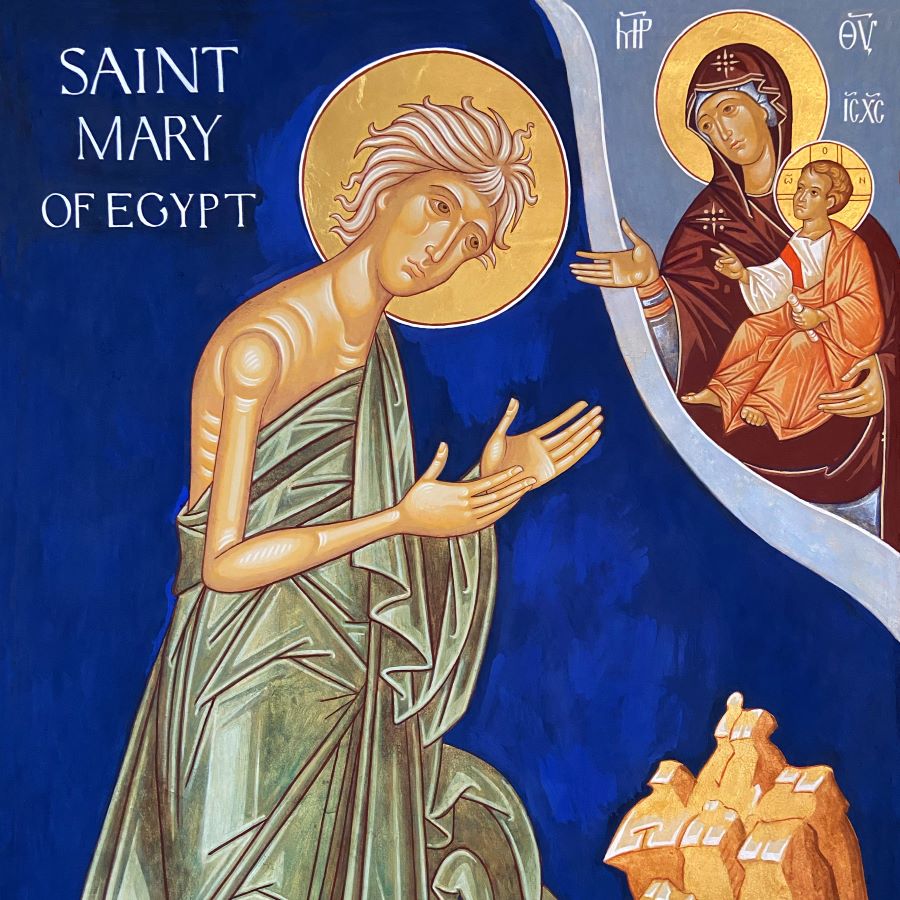
“When I look at the iconography in this country, produced by North Americans, the biggest mistake that I see constantly is that people don't know how to draw. The second mistake that I see over and over is people don't know how to use color. I want to stress that iconography is a vocation and if you are called to do it, you really have to devote some serious time to learning the basic fundamentals–five to six years at a minimum of constant work. You can't just take a two-week workshop and then hang out your placard saying you're a master iconographer and start accepting commissions! You need to have a prolonged period of internalizing the language of iconography through drawing, painting, and studying the theology and history of the medium.
“Some people talk about doing innovation in icons, but that cannot be an intellectual pursuit. Innovation cannot be some bright idea imposed from without or a self-conscious pursuit. When you become a master iconographer through years of hard work and study God will be able to use you to speak to the world about Himself the way he did with a master like Andrei Rublev. But it is not something you set out to consciously do. I love the work of Anton and Ekaterina Daineko. They are truly master iconographers thoroughly immersed in the Orthodox tradition yet at the same time his icons are very modern. He and his wife are also very aware of the kind of training you need to get there.
“One of the transformative experiences for me was with Fr. Nicolas Ozolin years ago at St. Vladimir’s, when I was still struggling to figure out what I was doing with icons. I had only been Orthodox for maybe two or three years at the time. He looked at an icon of Christ that I was struggling to do and told me all of my sins and my secret heresies just by the way I was using color and line. That was an amazing experience–and a little frightening.”
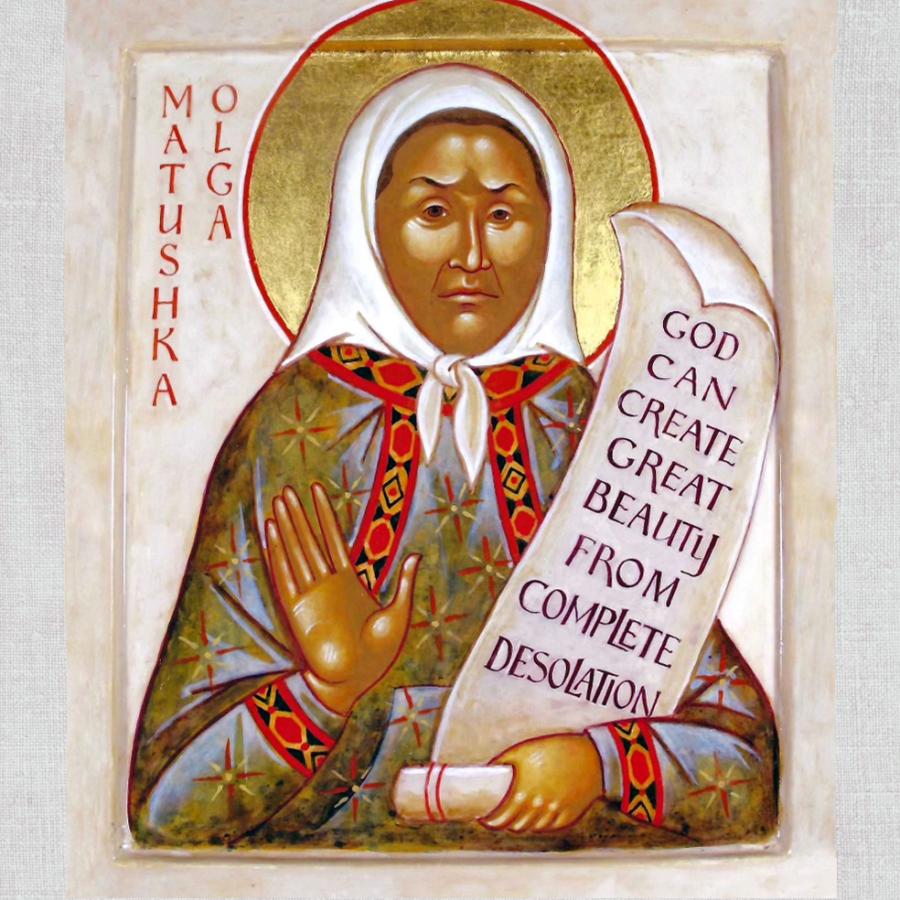
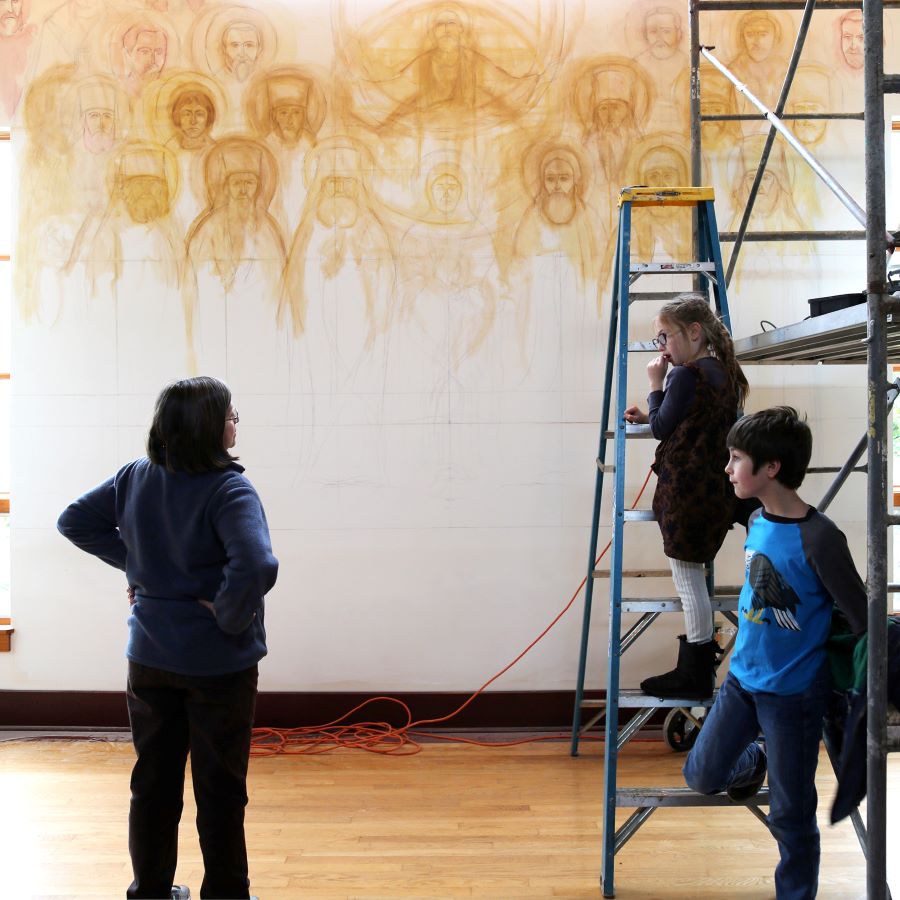
As always, we asked our Woman of the Week, Heather MacKean, to tell you about her morning routine. You see her here telling two children about the work she is doing at their church, one of her cat alarm clocks, and her icon of the Ascension:
“I have two cats who, like all cats, have incredible biological clocks. My morning routine is the cats wake me up every morning at seven. I get up and do some short prayers, make some coffee, read the daily readings, and read a kathisma of psalms. Then I start my day. I have an icon student living with me, so usually I have to take her to work in the morning, too, because she doesn't drive. So she's also part of my morning routine.”
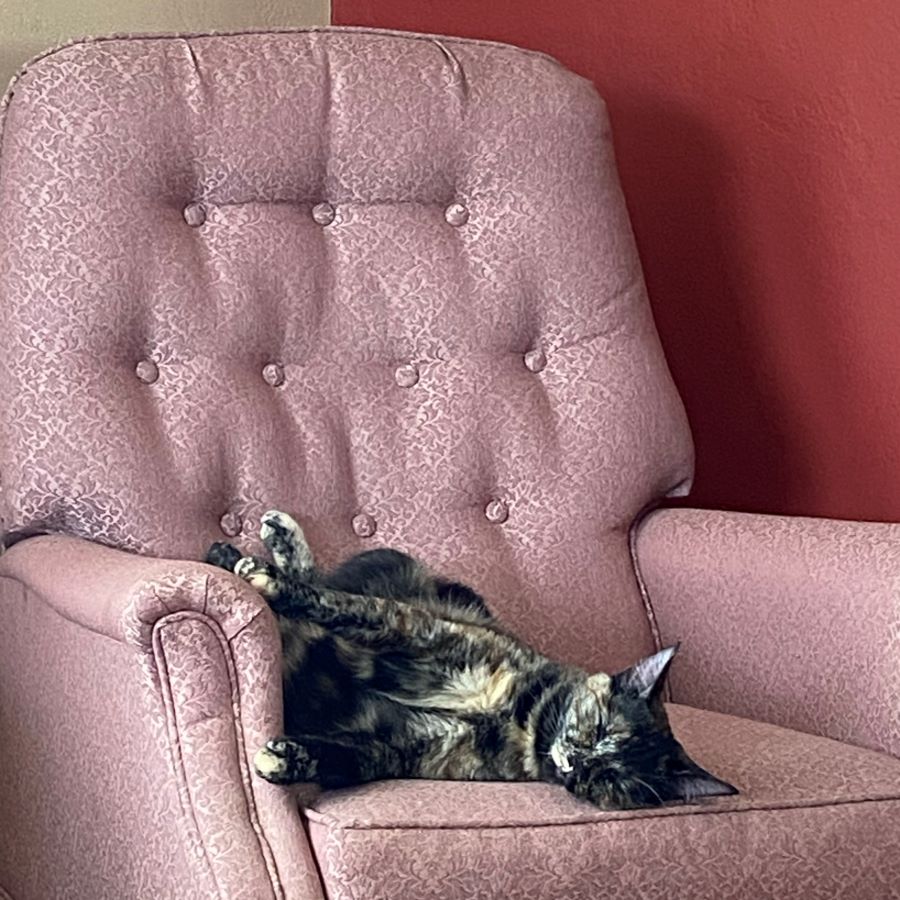
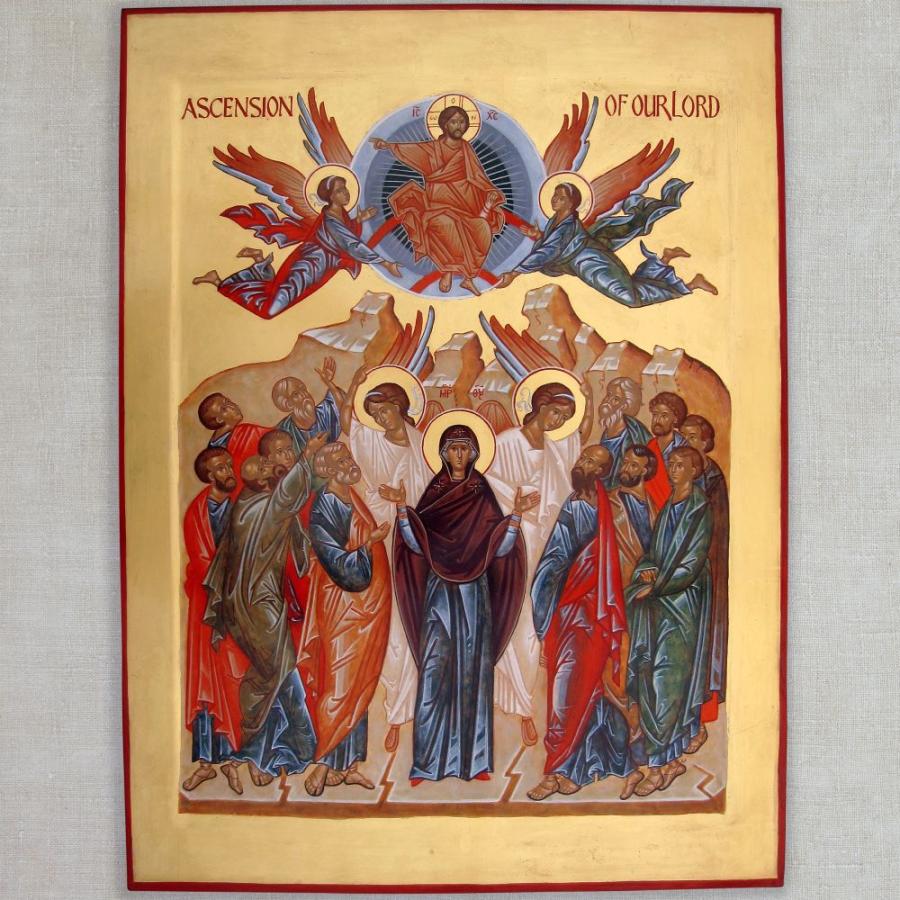
Thank you, Heather!


